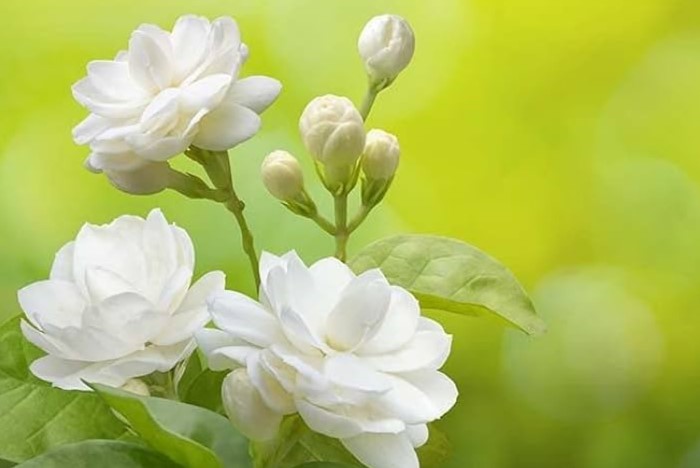Jasmine, known for its captivating fragrance and delicate beauty, is a flower that has captured the admiration of many throughout history. This enchanting bloom is a staple in perfumes, traditional medicine, and even culinary arts. Despite its widespread popularity, jasmine commands a high price, leaving many to wonder why such a seemingly simple flower costs so much. In this article, we will explore the various factors that contribute to the high cost of jasmine, including its cultivation, harvesting, and market dynamics.
The Cultivation Challenges of Jasmine
Soil and Climate Requirements
Jasmine plants are not just any ordinary flowers. They thrive in specific conditions that are far from universal. Jasmine requires well-drained, fertile soil and a warm climate with plenty of sunlight. These plants are sensitive to extreme temperatures and frost, which limits the regions where they can be grown effectively. The need for ideal growing conditions adds to the complexity of jasmine cultivation, making it a labor-intensive and costly process.
Labor-Intensive Cultivation
Growing jasmine is not a task for the faint-hearted. It demands meticulous care and regular maintenance. From planting to pruning, every stage of jasmine cultivation requires dedicated effort. Farmers must ensure that the plants receive adequate water, nutrients, and protection from pests and diseases. This level of attention increases the labor costs associated with jasmine farming.
Limited Growing Seasons
Another factor that drives up the cost of jasmine is its limited growing season. Jasmine plants typically have a specific flowering period during which they produce their aromatic blooms. This short window of time means that jasmine farmers have to maximize their output during these few months, adding to the pressure and cost of production.
Harvesting Jasmine: A Delicate Process
Timing and Method
Harvesting jasmine is a delicate process that requires precision. The flowers must be picked at the exact moment when their fragrance is at its peak. If harvested too early or too late, the quality of the jasmine can be compromised. This precise timing adds to the labor costs and overall expense of jasmine.
Hand-Picking Tradition
Unlike many crops that can be harvested using machinery, jasmine is typically hand-picked. Each blossom must be gently plucked to avoid damaging the plant or the flower itself. This manual process is time-consuming and labor-intensive, which further contributes to the high cost of jasmine.
The Role of Jasmine in Perfumery
Essential Oil Extraction
One of the primary reasons jasmine is so expensive is its role in the fragrance industry. Jasmine essential oil, extracted from the flowers, is a coveted ingredient in high-end perfumes and colognes. The process of extracting jasmine oil is complex and requires a large quantity of flowers to produce a small amount of oil. This low yield of essential oil from jasmine flowers significantly drives up the price.
High Demand for Quality
In the world of perfumery, quality is paramount. Jasmine is known for its rich, sweet, and exotic scent, making it a desirable component in luxury fragrances. The high demand for high-quality jasmine oil ensures that its price remains elevated.
The Market Dynamics of Jasmine
Supply and Demand
The interplay between supply and demand plays a crucial role in the pricing of jasmine. Given the limited growing regions and the labor-intensive process involved in its cultivation and harvesting, the supply of jasmine is relatively constrained. On the other hand, the demand for jasmine, particularly in the perfume industry, remains consistently high. This imbalance between supply and demand contributes to the high cost of jasmine.
Economic Factors
Economic factors also influence the price of jasmine. Fluctuations in labor costs, fuel prices, and trade policies can impact the overall cost of jasmine production. Additionally, the costs associated with transporting jasmine from growing regions to markets worldwide can further drive up the price.
Jasmine in Traditional Medicine and Culinary Arts
Medicinal Uses
Jasmine has been used in traditional medicine for centuries. Its soothing properties are believed to aid in reducing stress, improving sleep, and promoting overall well-being. The use of jasmine in herbal remedies and essential oils adds to its value and, consequently, its cost.
Culinary Applications
In culinary arts, jasmine is used to infuse flavors into various dishes and beverages. Jasmine tea, for example, is a popular beverage enjoyed for its fragrant aroma and delicate taste. The inclusion of jasmine in gourmet foods and beverages further enhances its perceived value and contributes to its high price.
see also: Does Jasmine Attract Love?
Novel Ideas and Innovations
Sustainable Cultivation
As demand for jasmine continues to rise, there is a growing emphasis on sustainable cultivation practices. Innovative techniques such as organic farming and controlled-environment agriculture are being explored to improve jasmine production while minimizing environmental impact. These advancements may help stabilize prices in the long run.
Synthetic Alternatives
With the high cost of natural jasmine, researchers are exploring synthetic alternatives to replicate its fragrance. Synthetic jasmine compounds can be used in perfumes and other products, potentially reducing the reliance on natural jasmine and influencing its market price.
Conclusion
Jasmine’s high price is the result of a combination of factors, including its demanding cultivation requirements, labor-intensive harvesting process, and significant role in the fragrance industry. The limited supply, coupled with high demand, further drives up its cost. Additionally, jasmine’s uses in traditional medicine and culinary arts contribute to its overall value.
The complexities involved in jasmine production and the ongoing innovations in cultivation and synthetic alternatives highlight the multifaceted reasons behind its expense. As the flower continues to be a symbol of luxury and sophistication, its price remains a reflection of its intricate journey from bloom to bottle. Understanding these factors provides insight into why jasmine is not just a flower but a valuable commodity in the world of high-end products.


